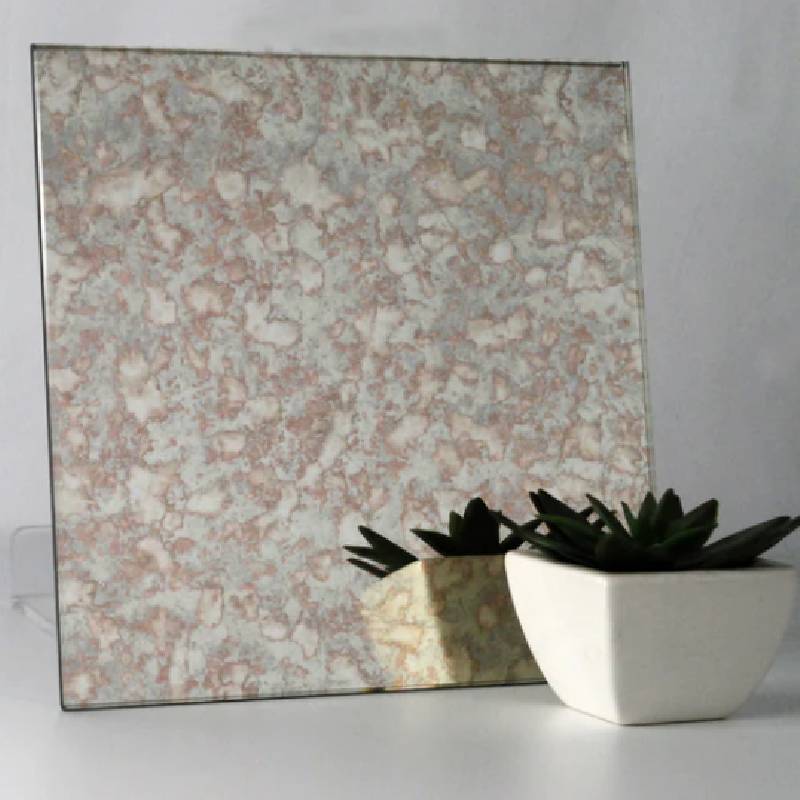The Versatile Uses of Float Glass in Modern Architecture
The advent of float glass technology has revolutionized the field of modern architecture, providing designers with a versatile material that is both aesthetically pleasing and functionally superior. This type of glass, made by floating molten glass on a bed of molten metal to create a smooth and uniform surface, has myriad uses in contemporary building design.
One of the most significant benefits of float glass is its exceptional clarity and optical quality. It provides an unobstructed view, which makes it ideal for large window panels that offer stunning views while allowing ample natural light into interior spaces. Its smooth surface also reduces glare, making it perfect for skyscrapers where reflection can be a concern.
In addition to its visual appeal, float glass boasts excellent thermal insulation properties. It helps maintain a comfortable indoor temperature by trapping air between two or more layers of glass. This feature is particularly beneficial in buildings located in extreme climates, contributing to energy conservation efforts by reducing dependence on heating and cooling systems.
The durability of float glass cannot be overstated. It is much harder to break than traditional plate glass, thanks to its uniform thickness and absence of distortions. This characteristic makes it suitable for applications requiring safety, such as hurricane-resistant windows in coastal regions. Moreover, even when broken, float glass tends to shatter into less hazardous chunks rather than sharp shards, adding an extra layer of safety for occupants Moreover, even when broken, float glass tends to shatter into less hazardous chunks rather than sharp shards, adding an extra layer of safety for occupants

Moreover, even when broken, float glass tends to shatter into less hazardous chunks rather than sharp shards, adding an extra layer of safety for occupants Moreover, even when broken, float glass tends to shatter into less hazardous chunks rather than sharp shards, adding an extra layer of safety for occupants
 float glass uses
float glass uses.
Float glass is also highly customizable. It can be cut and shaped to fit unique architectural designs without sacrificing strength or integrity. This adaptability allows architects to incorporate curved glass elements or intricate patterns into their structures, expanding the creative possibilities for modern buildings.
Furthermore, float glass serves functional purposes beyond mere walls or windows. It can be used as partitions in open-plan offices to provide a sense of division while still maintaining an open feel. In retail settings, large displays made from float glass attract customers with their elegance and clarity, showcasing products in an appealing light.
In conclusion, the uses of float glass are as broad as the imagination of architects and designers. From enhancing natural lighting and views to providing thermal efficiency and structural integrity, float glass is an essential component of modern architectural marvels. Its versatility ensures that it will continue to play a crucial role in shaping the built environment for years to come.
 Afrikaans
Afrikaans  Albanian
Albanian  Amharic
Amharic  Arabic
Arabic  Armenian
Armenian  Azerbaijani
Azerbaijani  Basque
Basque  Belarusian
Belarusian  Bengali
Bengali  Bosnian
Bosnian  Bulgarian
Bulgarian  Catalan
Catalan  Cebuano
Cebuano  Corsican
Corsican  Croatian
Croatian  Czech
Czech  Danish
Danish  Dutch
Dutch  English
English  Esperanto
Esperanto  Estonian
Estonian  Finnish
Finnish  French
French  Frisian
Frisian  Galician
Galician  Georgian
Georgian  German
German  Greek
Greek  Gujarati
Gujarati  Haitian Creole
Haitian Creole  hausa
hausa  hawaiian
hawaiian  Hebrew
Hebrew  Hindi
Hindi  Miao
Miao  Hungarian
Hungarian  Icelandic
Icelandic  igbo
igbo  Indonesian
Indonesian  irish
irish  Italian
Italian  Japanese
Japanese  Javanese
Javanese  Kannada
Kannada  kazakh
kazakh  Khmer
Khmer  Rwandese
Rwandese  Korean
Korean  Kurdish
Kurdish  Kyrgyz
Kyrgyz  Lao
Lao  Latin
Latin  Latvian
Latvian  Lithuanian
Lithuanian  Luxembourgish
Luxembourgish  Macedonian
Macedonian  Malgashi
Malgashi  Malay
Malay  Malayalam
Malayalam  Maltese
Maltese  Maori
Maori  Marathi
Marathi  Mongolian
Mongolian  Myanmar
Myanmar  Nepali
Nepali  Norwegian
Norwegian  Norwegian
Norwegian  Occitan
Occitan  Pashto
Pashto  Persian
Persian  Polish
Polish  Portuguese
Portuguese  Punjabi
Punjabi  Romanian
Romanian  Russian
Russian  Samoan
Samoan  Scottish Gaelic
Scottish Gaelic  Serbian
Serbian  Sesotho
Sesotho  Shona
Shona  Sindhi
Sindhi  Sinhala
Sinhala  Slovak
Slovak  Slovenian
Slovenian  Somali
Somali  Spanish
Spanish  Sundanese
Sundanese  Swahili
Swahili  Swedish
Swedish  Tagalog
Tagalog  Tajik
Tajik  Tamil
Tamil  Tatar
Tatar  Telugu
Telugu  Thai
Thai  Turkish
Turkish  Turkmen
Turkmen  Ukrainian
Ukrainian  Urdu
Urdu  Uighur
Uighur  Uzbek
Uzbek  Vietnamese
Vietnamese  Welsh
Welsh  Bantu
Bantu  Yiddish
Yiddish  Yoruba
Yoruba  Zulu
Zulu 

 Moreover, even when broken, float glass tends to shatter into less hazardous chunks rather than sharp shards, adding an extra layer of safety for occupants Moreover, even when broken, float glass tends to shatter into less hazardous chunks rather than sharp shards, adding an extra layer of safety for occupants
Moreover, even when broken, float glass tends to shatter into less hazardous chunks rather than sharp shards, adding an extra layer of safety for occupants Moreover, even when broken, float glass tends to shatter into less hazardous chunks rather than sharp shards, adding an extra layer of safety for occupants